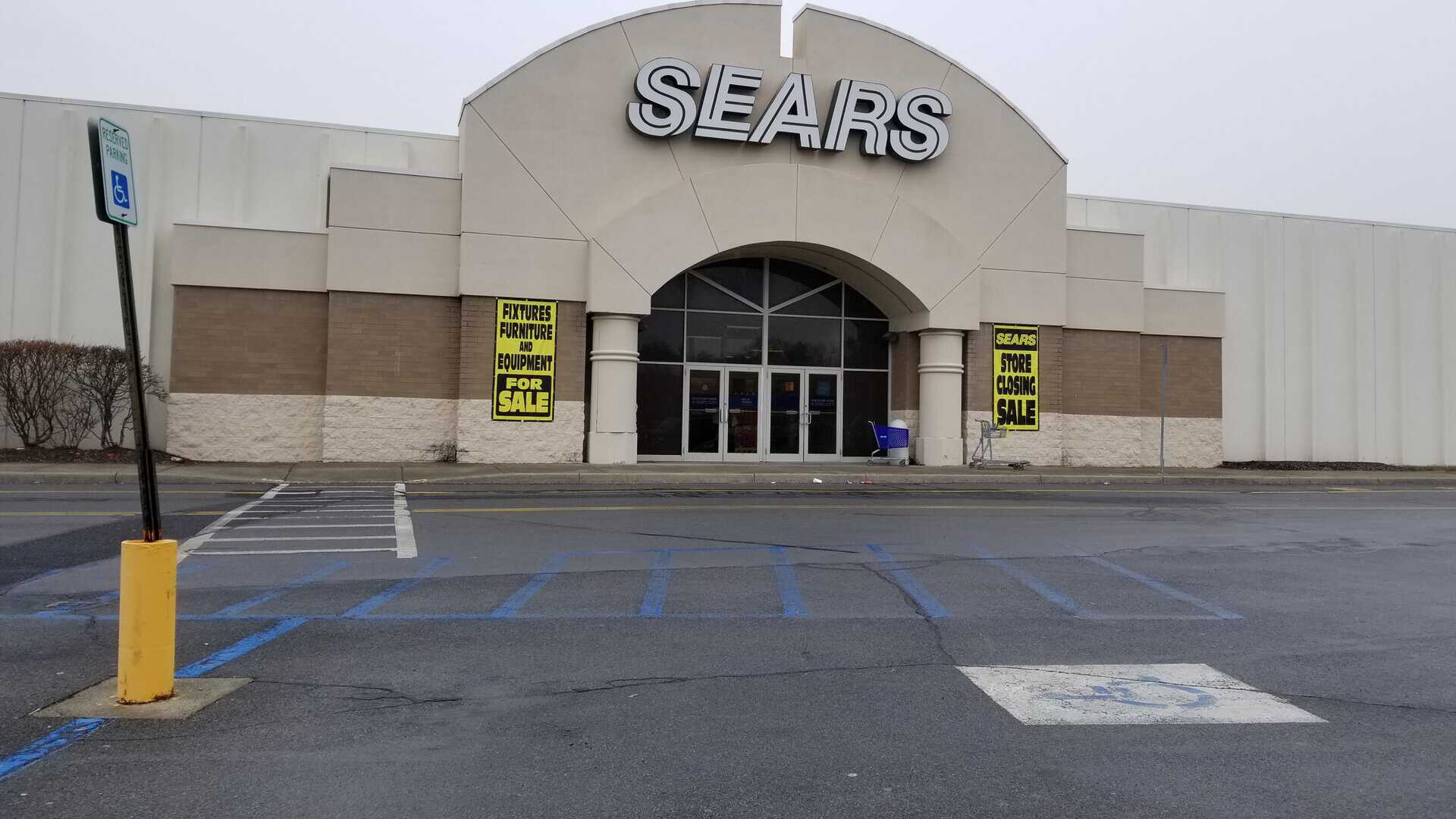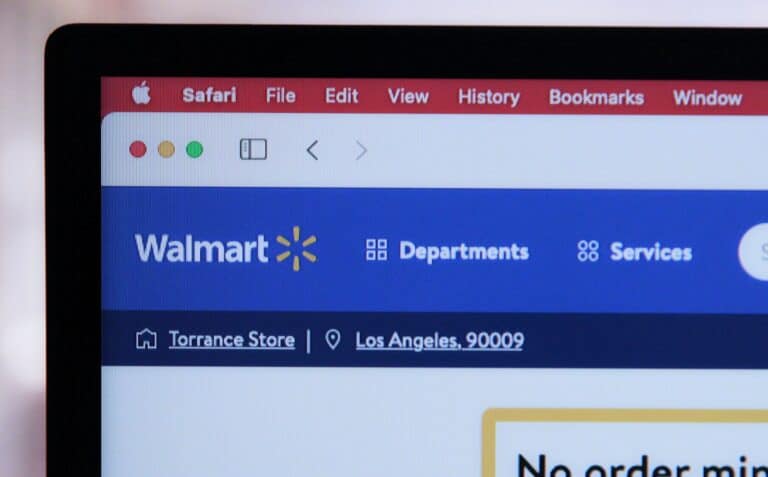
Sears, once a retail giant in America, has experienced a dramatic downfall. The company, founded in 1892 by Richard Warren Sears and Alvah Curtis Roebuck, dominated the retail landscape for decades. Sears filed for Chapter 11 bankruptcy on October 15, 2018, with $6.9 billion in assets and $11.3 billion in liabilities.
The decline of Sears began long before its bankruptcy filing. The company failed to adapt to changing consumer preferences and the rise of e-commerce. Sears’ focus on appliances and tools became less relevant as shoppers sought fashion and electronics from specialized retailers.
Despite its current struggles, Sears has shown signs of resilience. In 2023, the company quietly reopened two stores in California, suggesting a potential comeback attempt. This move indicates that Sears may still have some life left, though its future remains uncertain in the competitive retail market.
Image Credit: Mike Kalasnik, CC BY-SA 2.0 https://creativecommons.org/licenses/by-sa/2.0, via Wikimedia Commons
The Decline and Fall of Sears
Once a dominant force in American retail, Sears has experienced a dramatic downfall over the past few decades. A combination of strategic missteps, changing consumer trends, and increased competition led to the iconic retailer’s decline.
Key Factors Contributing to Sears’ Demise
- Failure to Adapt to Changing Consumer Preferences: Sears failed to keep pace with evolving consumer preferences, particularly the shift towards online shopping and the desire for a more modern and engaging retail experience.
- Competition from Big-Box Retailers and Online Giants: The rise of big-box retailers like Walmart and Target, along with the emergence of e-commerce giants like Amazon, intensified competition and eroded Sears’ market share.
- Neglect of Stores and Infrastructure: Sears underinvested in its physical stores, leading to outdated facilities and a less appealing shopping environment compared to its competitors.
- Financial Mismanagement and Debt: Sears accumulated significant debt through leveraged buyouts and financial maneuvers, hindering its ability to invest in its core business and adapt to changing market conditions.
- Missed Opportunities in E-Commerce: Despite having an early presence in online retail, Sears failed to capitalize on the growth of e-commerce, allowing competitors to gain a significant advantage.
- Loss of Brand Relevance: Sears’ brand image became outdated and less relevant to younger generations, failing to attract new customers and retain existing ones.
Timeline of Sears’ Decline
- 1980s-1990s: Sears begins to lose market share to Walmart and Target, facing challenges from discount retailers and changing consumer preferences.
- 2000s: Sears merges with Kmart in an attempt to revitalize both brands, but the merger fails to achieve its intended goals.
- 2010s: Sears continues to struggle, closing stores, selling assets, and facing mounting financial difficulties.
- 2018: Sears Holdings files for bankruptcy, marking a significant turning point in the company’s history.
- Present: Sears survives in a reduced form, operating a limited number of stores and an online presence, but its future remains uncertain.
Lessons Learned from Sears’ Downfall
- Adapt to changing consumer trends: Retailers must stay ahead of evolving consumer preferences and adapt their strategies to meet changing demands.
- Invest in innovation and technology: Embracing new technologies and innovative approaches is crucial for staying competitive in the rapidly changing retail landscape.
- Maintain a strong brand identity: Cultivating a relevant and appealing brand image is essential for attracting and retaining customers.
- Manage finances prudently: Avoiding excessive debt and making sound financial decisions are critical for long-term sustainability.
- Embrace e-commerce: A strong online presence is vital for reaching customers in today’s digital age.
Sears’ decline serves as a cautionary tale for businesses across industries, highlighting the importance of adaptability, innovation, and customer-centricity in navigating a dynamic and competitive marketplace.
Key Takeaways
- Sears filed for bankruptcy in 2018 after years of declining sales and mounting debt
- The company’s failure to adapt to changing consumer habits contributed to its downfall
- Recent store reopenings hint at possible revival efforts, but Sears’ future remains uncertain
Historical Overview of Sears
Sears transformed from a small watch company into a retail giant that shaped American consumer culture for over a century. The company’s journey included innovative business strategies, nationwide expansion, and ultimately, significant challenges.
Founding and Expansion
Richard Sears started the R.W. Sears Watch Company in 1886. He sold watches by mail order to rural customers. Alvah Roebuck joined as a watchmaker in 1887. The company moved to Chicago and became Sears, Roebuck and Company in 1893.
Sears capitalized on the rural market’s need for goods. Their mail-order catalogs offered a wide range of products. These catalogs became known as the “Consumer’s Bible.” By 1895, the catalog had grown to 532 pages.
Julius Rosenwald joined in 1895, bringing capital and business acumen. He became president in 1908 and chairman in 1922. Under his leadership, Sears expanded its product lines and improved operations.
Retail Innovation and Growth
Sears opened its first retail store in Chicago in 1925. This marked a shift from mail-order to brick-and-mortar sales. The company’s stores spread rapidly across the United States.
Sears introduced its own brands, like Craftsman tools and Kenmore appliances. These became household names. The company also pioneered the concept of anchor stores in shopping malls.
By the 1970s, Sears was the largest retailer in the United States. It employed hundreds of thousands of people. The Sears Tower in Chicago, completed in 1973, symbolized the company’s dominance.
Merger with Kmart
Sears faced increasing competition in the late 20th century. Discount chains like Walmart and Target gained market share. Online retailers further challenged Sears’ business model.
In 2004, Kmart acquired Sears for $11 billion. The merged company became Sears Holdings Corporation. This move aimed to combine resources and revitalize both brands.
However, the merger did not solve underlying problems. Sears continued to lose market share. Store closures and asset sales followed. In 2018, Sears Holdings filed for Chapter 11 bankruptcy protection.
The Decline of Sears
Sears faced numerous challenges in the late 20th and early 21st centuries. The once-dominant retailer struggled to adapt to changing consumer preferences and new competition.
Challenges and Competition
Sears failed to keep up with the rise of e-commerce. As online shopping grew, Sears was slow to develop a strong digital presence. Amazon and other online retailers captured market share rapidly.
Big-box stores like Walmart and Home Depot also posed significant threats. These competitors offered lower prices and wider selections. Sears struggled to match their efficiency and buying power.
The company’s brick-and-mortar stores became outdated. Many locations were in aging malls with declining foot traffic. Sears didn’t invest enough in store renovations or new formats to attract shoppers.
Financial Troubles and Bankruptcy
Sears Holdings Corporation, formed from the merger of Sears and Kmart in 2005, faced mounting financial problems. The company reported losses for years. Its debt grew as sales declined.
In October 2018, Sears Holdings filed for Chapter 11 bankruptcy protection. At the time, it had $6.9 billion in assets and $11.3 billion in liabilities. The company closed hundreds of stores in an attempt to restructure.
Edward Lampert, the company’s CEO and largest shareholder, tried to save Sears through his hedge fund ESL Investments. He bought many of the company’s assets in a bankruptcy auction.
Effects on Jobs and Economy
Sears’ decline had widespread impacts on jobs and local economies. The company once employed over 300,000 people. As stores closed, thousands lost their jobs.
Mall owners and commercial real estate suffered from Sears’ store closures. Many malls struggled to fill large vacant spaces left by Sears and other department stores.
Some communities lost tax revenue and saw reduced economic activity. Sears stores had often been anchor tenants in shopping centers, driving foot traffic to nearby businesses.
The fall of Sears marked the end of an era in American retail. It showed how quickly market conditions can change, even for long-established companies.
Sears’ Contributions and Legacy
Sears left an indelible mark on American retail and consumer culture. The company introduced innovative products and services that shaped shopping habits for generations.
Brand Impact
Sears created several iconic brands that became household names. Kenmore appliances, introduced in 1927, gained a reputation for quality and reliability. Craftsman tools, launched in 1927, became synonymous with durability and value.
DieHard batteries, introduced in 1967, set new standards for automotive power. These brands helped Sears build customer loyalty and trust.
The company also ventured into financial services. In 1985, Sears launched the Discover Card, which grew into a major credit card network.
Innovations and Diversification
Sears pioneered the catalog business model, revolutionizing retail in rural America. The Sears catalog, first published in 1888, offered a wide range of products to customers nationwide.
The company diversified into various industries. In 1931, Sears founded Allstate Insurance, which became a leading insurance provider.
Sears built the iconic Sears Tower in Chicago, which was the world’s tallest building from 1974 to 1998. This skyscraper symbolized the company’s dominance in American retail.
In 1993, Sears acquired Lands’ End, expanding into apparel and home goods. These innovations and acquisitions demonstrated Sears’ adaptability and influence on American business.
Modern Strategies and Outlook
Sears has implemented new approaches to regain market share and adapt to changing consumer behaviors. The company’s efforts focus on leveraging technology and maximizing holiday sales opportunities.
Post-Bankruptcy Strategies
Sears Holdings has embraced e-commerce to compete with online retailers. The company has improved its website and mobile app to offer a seamless shopping experience. Sears now provides features like buy online, pick up in-store to blend digital and physical retail.
The retailer has also downsized its physical footprint. It closed underperforming stores and converted others to smaller formats. These smaller stores focus on popular categories like appliances and tools.
Sears has invested in data analytics to better understand customer preferences. This helps the company tailor its product offerings and marketing strategies.
The Role of the Holiday Season
The holiday season remains crucial for Sears’ recovery efforts. The company has revamped its holiday marketing campaigns to attract shoppers. It now emphasizes competitive pricing and exclusive deals on popular gift items.
Sears has improved its inventory management for the holiday rush. The retailer uses predictive analytics to stock the right products in the right quantities. This helps prevent stockouts and reduces excess inventory.
The company has also enhanced its online presence during peak shopping periods. Sears offers special cyber deals and extends its digital customer service hours during the holidays.
Frequently Asked Questions
Sears’ decline and current status have sparked numerous questions among consumers and industry observers. The following addresses key inquiries about the once-dominant retailer.
How many Sears stores remain open today?
As of 2024, the number of Sears stores has dwindled significantly. Only a handful of locations continue to operate across the United States. The exact count fluctuates due to ongoing closures and occasional reopenings.
Why did Sears go out of business?
Sears faced multiple challenges that led to its downfall. The rise of e-commerce giants like Amazon disrupted traditional retail. Sears struggled to adapt to changing consumer preferences and shopping habits. Mismanagement and lack of investment in store modernization also contributed to its decline.
Where can the remaining Sears stores be found?
The few remaining Sears stores are scattered across various states. Some locations can be found in smaller markets and suburban areas. Specific store locations change frequently, so interested shoppers should check the company’s website for up-to-date information.
Who currently owns the Sears brand?
Transform Holdco LLC, a company controlled by former Sears CEO Eddie Lampert, owns the Sears brand. This entity acquired Sears Holdings’ assets after the company filed for bankruptcy in 2018.
What are the primary factors that led to Sears’ decline?
Several factors contributed to Sears’ decline:
- Failure to adapt to e-commerce trends
- Underinvestment in store modernization
- Increased competition from discount retailers
- Poor management decisions
- High debt levels
These issues compounded over time, eroding Sears’ market position and financial stability.
Has Sears fully ceased its business operations?
Sears has not fully ceased operations, but its presence has diminished greatly. A small number of stores remain open, and the brand continues to exist online. However, the company’s scale and influence have reduced dramatically compared to its heyday.






